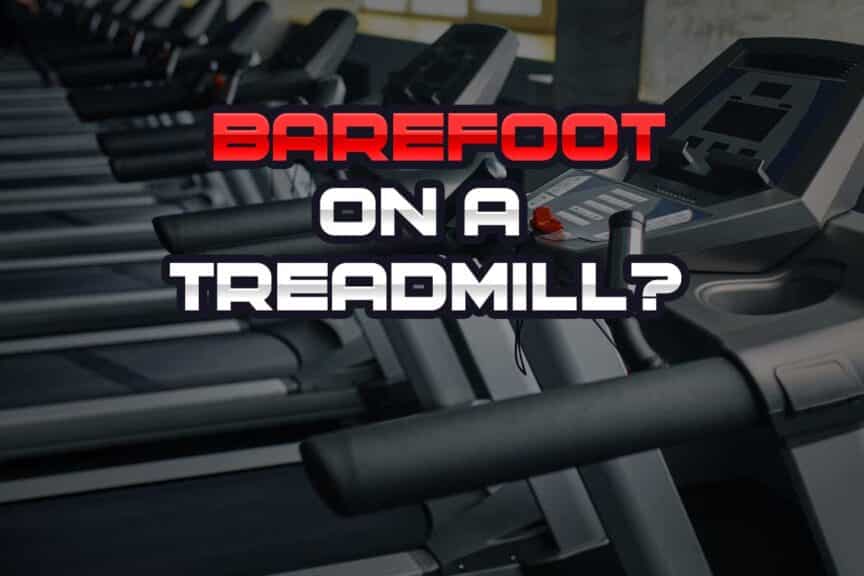Feet are incredibly complex, and the only thing more complex than these structures is the ever-present, ongoing (and often passionate) debate around whether or not we as humans should keep our feet as free from the confines of shoes as possible. Many advocate that we should avoid cushioned shoes, orthotics, and such structures like the plague, whether walking or running. Others suggest that there’s nothing wrong with padding, supporting, and protecting our feet as we see fit.
So, when it comes to running barefoot on a treadmill, what’s the right answer?
Running barefoot on a treadmill offers unique benefits when compared to outdoors, especially for beginners. Those keen to try barefoot treadmill running should start gradually and know what to look for in order to avoid specific injuries that can result due to the unique nature of this activity.
Want to learn more? Keep on reading, as this article will discuss in detail the potential benefits that await if you run barefoot on a treadmill along with key potential issues you should be aware of. By the end of this article, you should have a good idea as to whether or not barefoot treadmill running is something worth trying for yourself.
Related article: 5 Awesome Benefits of Walking Sideways on a Treadmill (You Need These)
ARTICLE CONTENTS:
Click/tap any of the following headlines to instantly jump to that section of the article!
Potential benefits:
Benefit 1: Increased proprioceptive input
Benefit 2: The springing treadmill deck
Benefit 3: The predictable surface
Benefit 4: The controlled climate
The potential issues:
Potential issue 1: Under striding and belt friction
Potential issue 2: Forces through the heel and foot
Potential issue 3: Stress on the arches
How to start running barefoot on a treadmill
Disclaimer: While I am a physical therapist, I am not YOUR physical therapist. As a result, I cannot tell you whether or not any treatments mentioned on this website or in this article may or may not be appropriate for you, including running barefoot on a treadmill. By following any information within this post, you are doing so at your own risk. You are advised to seek appropriate medical advice for any pain you may be experiencing.
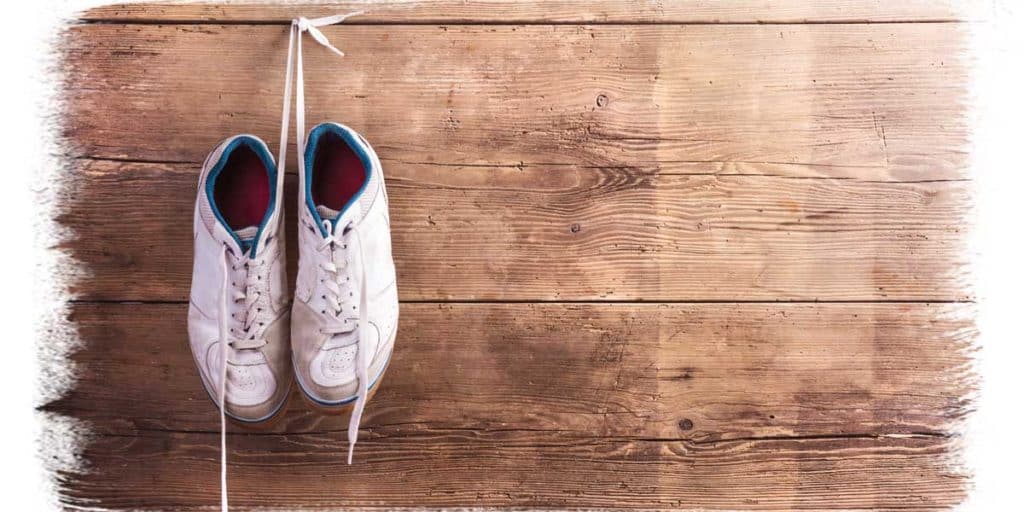
Obviously, there is a lot of information to consider, unpack and digest when examining and exploring this topic. The goal of this post is not to sway you one way or another when considering barefoot running on a treadmill; the goal is to help give you enough information to consider in regards to helping you have confidence in making an informed decision as to whether or not this is a training method that is best for YOU.
Currently, research examining the various aspects of barefoot running doesn’t offer any slam-dunk benefits in general but oftentimes seems to find that it’s not necessarily worse, either. Most of the research I’ve looked at states that there are key factors to be mindful of, but that there’s no direct correlation that exists within literature showing that barefoot running is directly associated with specific injuries when done appropriately.
The following journal articles are a good starting point to get up to speed with this general consensus:
- Barefoot running claims and controversies: a review of the literature1
- Barefoot running: biomechanics and implications for running injuries2
- Barefoot running: does it prevent injuries?3
- Long-term effects of habitual barefoot running and walking: a systematic review4
There’s an absolute multitude of factors that go into all of this, and each study can only address one or two factors at a time. Needless to say, not every factor or study can be discussed within a single blog post. But addressing some of the big, overarching concepts will certainly go a long way in helping you make an informed decision.
If you DO feel like it is worthy of trying (and perhaps implementing on a regular basis), this post will help you to know what to look for in terms of potential benefits AND common issues that can arise with barefoot treadmill running. Prevention is better than any cure and an individual who is both well informed and well versed in their training methodology will prevent a world of injuries and other issues from ever even arising.
Benefit 1: Increased proprioceptive input to the feet
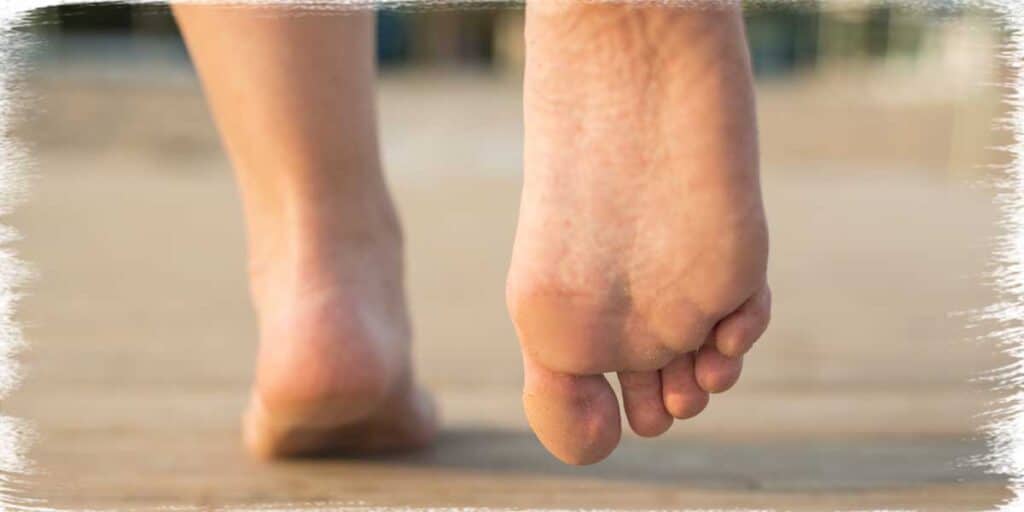
Those who are proponents of running barefoot (either outdoors or on a treadmill), often state that one of their biggest reasons for doing so is for the increased sensory input that it provides for their feet. Feet have a lot of structures and components in general, and the density of sensory nerve endings in the bottom of the foot is just one such example of this phenomenon.
Related article: The Plan: How to Get Back Into Running After Gaining Weight
As a result, barefoot running provides a lot of proprioceptive and sensory input into the feet. Whether running barefoot on pavement or on a treadmill belt, this heightened sensory input through the feet occurs since greater sensory stimulation is taking place on the sole of the foot.
Many believe that this lack of sensory input to the feet when running in shoes is responsible, at least in part, for certain injuries found in running populations. It’s not a universally supported view in the scientific world, but there are studies that back it up5 (link takes you to the article), along with the anecdotal evidence of many successful barefoot runners who never report any incidence of foot pain.
Benefit 2: The treadmill deck springing up and down
Next time you watch someone running on a treadmill, watch the treadmill deck closely and see if you notice the deck springing up and down to slight extents with each step the runner takes.
While many people may think that running barefoot on a treadmill will likely result in an exceptionally hard impact on your heels and feet with every step, the force of the impact will actually be less -albeit slightly – than when compared to running barefoot on a paved pathway, such as a sidewalk or a hard-packed dirt trail.
This is due to the fact that the earth’s surface doesn’t give way beneath your feet while many treadmill decks actually move down to very small extents when the heel strike and loading response phases of the gait cycle occur. The extent of this force reduction, however, depends on the individual treadmill.
Again, this tends to be to rather small extents, but even these very modest reductions in forces via shock absorption from the deck moving downwards can add up to immense differences when experienced with each and every step during a run, especially if you’re new to barefoot running.
Benefit 3: The predictable surface
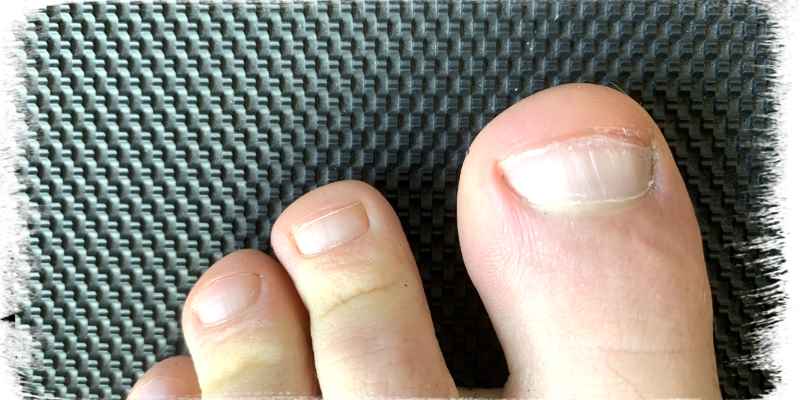
Unlike running outdoors, the benefit of running barefoot on a treadmill is that the surface your feet will be striking, loading onto, and lifting off of all throughout your run is in fact perfectly predictable. The soles of your feet may likely thank you if you start out running barefoot on a treadmill rather than on the unpredictable surface of the great outdoors.
If you have not performed barefoot running before, the skin on the soles of your feet may likely be much more soft and sensitive than those of an experienced barefoot runner who has built up thick, calloused, and less sensitive skin.
Human feet are absolutely loaded with sensory nerve endings, and it’s only when we add thickened, dead layers of skin onto them (I.e. calloused skin) do we ultimately reduce the extent of those nerves being stimulated, thus reducing the perception of sensitivity (dead skin doesn’t have nerve endings within it). In that regard, you can think of the soles of your shoes as a mega thickened layer of dead skin on the bottom of your feet.
As a result, you may find running barefoot on a treadmill to be the perfect starting point in your barefoot adventures since there won’t be any small rocks, pebbles, or other jagged textures or objects that your likely un-calloused feet can land on. Landing on any of these objects that you’d almost certainly encounter outdoors could be extremely uncomfortable to step on if the bottoms of your feet are soft and/or sensitive.
Benefit 4: The controlled climate
The helpfulness of this particular benefit can really depend on your geographic location as well as some other unique features of your body but is still worthy of discussion.
Frozen toes in cold climates
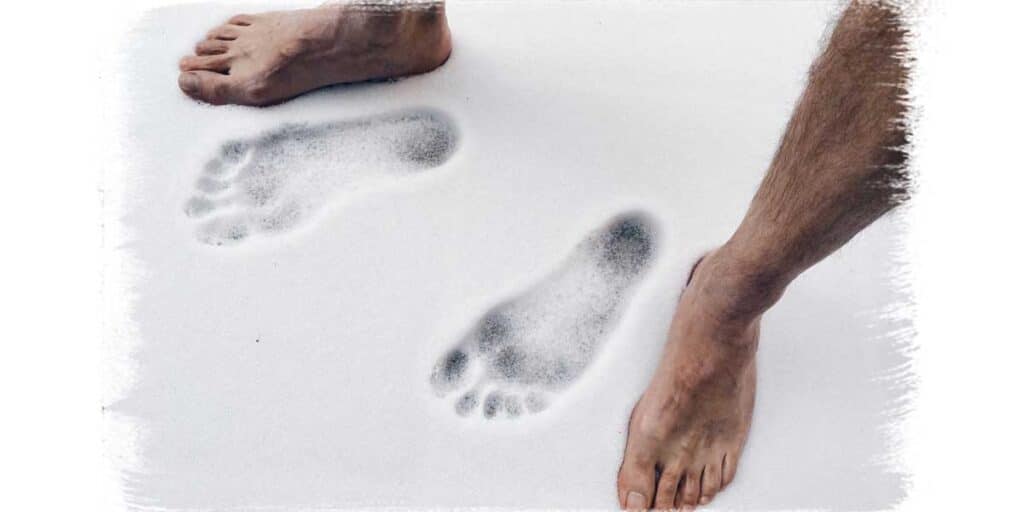
Not all of us are fortunate enough to live in a climate that offers warm temperatures year-round. And even for those of us who do, certain times of the day (such as early mornings or late evenings) may produce temperatures that are simply too cold for our bare feet to tolerate. There’s no real benefit to getting cardiovascular benefits at the expense of freezing cold or frost-nipped (or even bitten) toes.
Every person’s body tolerates temperature differently, so two people living in the same warm climate may in fact tolerate the same climate differently.
Thankfully, treadmills tend to be in climate-controlled environments, making it possible to run barefoot without the expense of cold or uncomfortable feet.
Burnt feet on hot pavement
Even if you’re fortunate enough to live in an environment that is warm enough to not freeze your toes off if running barefoot outdoors, you might be too fortunate in that the bottoms of your feet will get burned from running on surfaces that are too hot (think blacktop/asphalt and other such surfaces).
Thankfully, this isn’t an issue with running on a treadmill indoors, so until your feet get thickened and calloused, starting out on a treadmill may be the ideal first step to take (no pun intended).
The potential issues: Common issues experienced with barefoot treadmill running
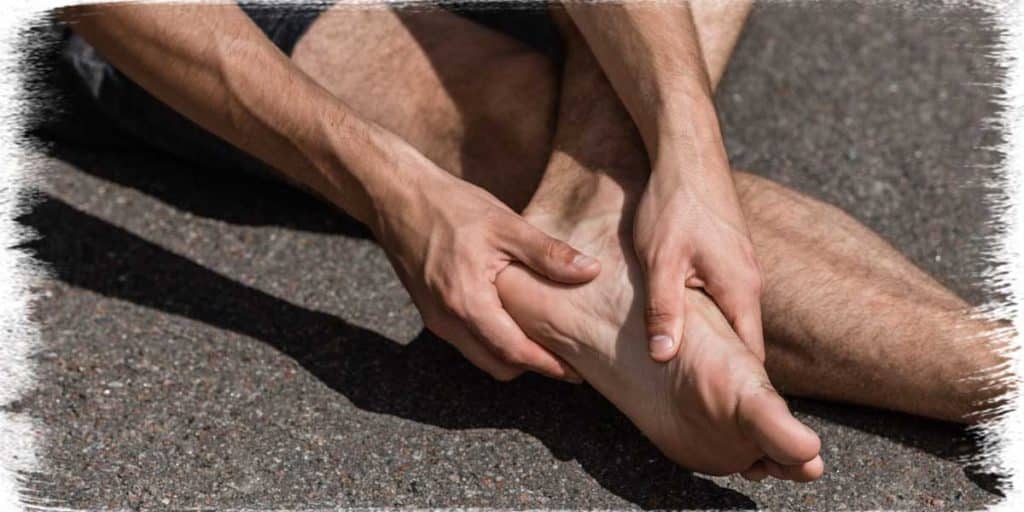
Potential issues that can occur from running barefoot on a treadmill aren’t all that different from running barefoot outdoors. In fact, many of these potential issues actually overlap. For the sake of this article, however, I’m going to focus on the key differences one can incur when barefoot running on a treadmill rather than outdoors.
Related Article: Four Handy Exercises to Help Loosen Stiff Ankles in All Directions
Keep in mind that there are still other potential issues unique to barefoot treadmill running, but the three issues discussed below are the ones you’re most likely to incur (or at least some variation of it).
Potential issue 1: Increased friction from the moving belt
If you have a habit of accidentally scuffing your shoe when running (due to slightly under-striding while bringing it in front of your body), you’ll want to be extra mindful when trying to run barefoot on a treadmill.
With the treadmill belt moving in the opposite direction that your foot is moving as you swing it forward, under striding can really put some uncomfortable shearing force onto the skin on the bottom of the foot. This is because when your foot contacts the belt, the skin on the bottom of the foot will be moving forward while the moving belt pulls it backward.
The result of this occurring is of course a high amount of shearing force translating through the skin of your foot. This may or may not be uncomfortable or painful based on the extent of your under-striding foot landing on the treadmill and the speed at which the belt is moving against it.
Nonetheless, it’s an issue to be aware of, especially if you chronically under stride in your running or if you’ve been known to periodically scuff the bottom of your shoe from time to time when running.
Potential issue 2: Increased force through the heel and forefoot
If you’re someone who is a “heavy runner”, you will want to be extra mindful of how your heels and forefeet feel if you give barefoot treadmill running a go. A “heavy runner” is the term often used to describe a runner who bobs up and down a lot when striding forward. The up and down bobbing means that the runner is producing a lot of vertical movement as they take each step forward.
As mentioned earlier, many treadmill decks have a natural spring to them, which can work in your favor to decrease the force of each heel strike, but it’s very minimal.
Since whatever goes up must come down, the increased downward force of the body results in a greater impact force going through the heel as it strikes the belt. If you’re a “light runner” or tend to only run rather short distances, this likely isn’t as much of an issue to worry about. But for runners who are physically heavier or “run heavier”, or run longer distances, the repeated forceful heavy striking of the heel and/or forefoot may cause some added discomfort, especially when first starting out.
Many runners will advocate that added cushioning beneath the heels isn’t necessary if running mechanics are ideal and if training load increases appropriately over time in order to build a tolerance to these demands. There is certainly much validity to these points, but one would still be wise to be aware of the fact that tissue resiliency can vary greatly based on a multitude of individual factors within the runner.
If the heel takes enough of a beating as time goes on, painful conditions such as fat pad syndrome, plantar fasciitis, sesamoiditis, or stress fractures can result in the feet.
Potential issue 3: Increased stress on the arches of the foot
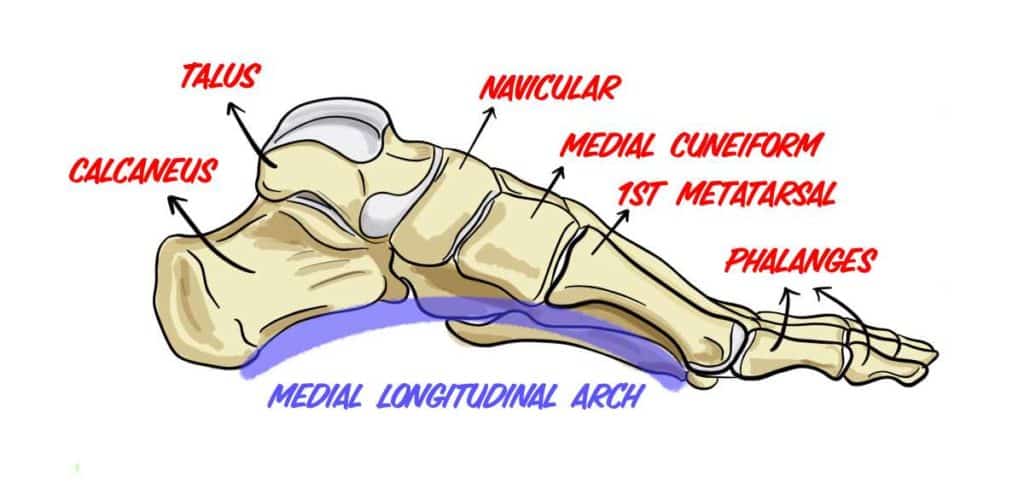
If you’re used to running with some form of arch support underneath your feet, you’ll want to be mindful of the fact that you’ll be taking that support away when running barefoot on the treadmill. This would be the same case as well if running barefoot outdoors/not on a treadmill.
There are plenty of different professional views out there as to whether orthotic and arch support is the best way to take care of your feet, but one thing that almost all of these professionals would all agree on is that if you’re used to having orthotic support beneath your feet, don’t immediately switch into high volumes of running without them.
You may very well in fact tolerate barefoot running just fine, but you need to be mindful of the extra stress and demands that get imposed upon the arches of your foot when they have no support beneath them.
Related article: The Seven Best Ways to Massage Your Calf Muscles All By Yourself
Rapidly switching from high-volume running with foot support to no support would kind of be like switching your lightweight exercise routine overnight for near-maximal, high-volume heavy weight lifting exercises – it’s just not a wise idea. Make the change a gradual one instead.
The quick takeaway: If you have a history of arch pain or use orthotics, be extra sure to slowly scale up your barefoot running volume over time to ensure that you give your arches (and the tissues that comprise them) the best chance possible for adapting to meet the stresses and demands of your barefoot activities. This is something you would be wise to do even if you don’t have a history of orthotic use or arch pain.
How to start running barefoot on a treadmill
Now that you know some of the big, key factors to be aware of when considering going barefoot on the treadmill, you may be wondering what may be the best approach to take if wanting to ditch the shoes and embrace the belt beneath your feet.
To get all of the details, which will help provide a great sense of confidence when first starting out, you can read my article: Beginner’s Guide to Barefoot Treadmill Running: Here’s How To Do It, in which I lay out a step-by-step approach for giving you the confidence you may feel like you need to ensure a successful outcome.
If you’re in a hurry and just want some of the basic points to consider, here are some of the basics, listed in a bulleted format below:
- Take into account any history of foot, ankle, knee or hip issues
- Respect what you body is telling you
- Use the 10% rule for appropriately increasing your running volume
Check out the article for the complete breakdown of these points along with additional ones as well.
Final thoughts:
Running barefoot on a treadmill holds some pretty unique benefits to those who are appropriate for it. The key to making it successful is to know yourself and your body quite well, know how barefoot treadmill running is different from outdoor barefoot running, and being aware of the benefits and potential drawbacks. From there you need to slowly and appropriately condition your feet and body for the demands of this activity by scaling up your running volume appropriately.
Happy running!
References:
1. Jenkins DW, Cauthon DJ. Barefoot running claims and controversies: a review of the literature. J Am Podiatr Med Assoc. 2011;101(3):231-246.
2. Altman AR, Davis IS. Barefoot running: biomechanics and implications for running injuries. Curr Sports Med Rep. 2012;11(5):244-250.
3. Murphy K, Curry EJ, Matzkin EG. Barefoot running: does it prevent injuries? Sports Med. 2013;43(11):1131-1138.
4. Hollander K, Heidt C, Van der Zwaard BC, Braumann K-M, Zech A. Long-term effects of habitual barefoot running and walking: a systematic review. Med Sci Sports Exerc. 2017;49(4):752-762.
5. Robbins SE, Hanna AM. Running-related injury prevention through barefoot adaptations. Med Sci Sports Exerc. 1987;19(2):148-156.

Hi! I’m Jim Wittstrom, PT, DPT, CSCS, Pn1.
I am a physical therapist who is passionate about all things pertaining to strength & conditioning, human movement, injury prevention and rehabilitation. I created StrengthResurgence.com in order to help others become stronger and healthier. I also love helping aspiring students and therapists fulfill their dreams of becoming successful in school and within their clinical PT practice. Thanks for checking out my site!

